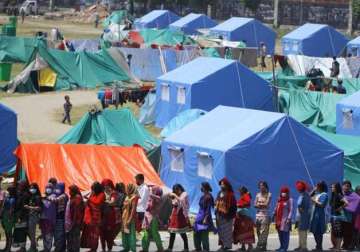London: Most of those who left their homes soon after a devastating earthquake hit Nepal on April 25 this year have now returned, shows an analysis of mobile phone data monitoring by British researchers.
Only about four to 14 percent of the affected people were still elsewhere, the study found.
Researchers from University of Southampton used mobile phone data to monitor the movement of people affected by the earthquake in Nepal and help with the continuing relief effort in the country.
Just a week after the disaster took place, the team began daily monitoring of anonymised phone data to track the displacement of populations in the affected areas. Molre than five months on, they were continuing to supply accurate, up-to-date reports to the United Nations, the researchers said.
"Although we have used mobile phone data before to measure population movements, this is the first time we have used the method in an ongoing 'live' situation. By watching how the population moves on a daily basis, we have been able to help directly with aid efforts and the rebuilding of infrastructures,” Andy Tatem, professor of Geography at Southampton University said in a statement.
Every time a person uses a mobile it sends information to a receiving tower and gives an approximate location of where the phone user is.
When this information is repeated multiple times, over millions of users, a detailed picture can be extracted of population density, movement and how it changes over time in a given area.
In Nepal, the researchers linked up with the largest mobile phone operator Ncell to analyse anonymised data from 12 million mobiles across the country.
By comparing information on the movement of these phones after the quake, with population distributions and movements before it hit, the team has established trends of where people are moving to and from.
Two weeks after the quake, the researchers' data showed that an estimated extra 500,000 people had left Kathmandu valley.
Latest World News
